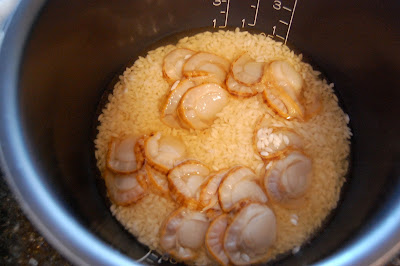


Brown rice was featured in a blog on the New York Times recently. Here is the link:
http://well.blogs.nytimes.com/2010/06/15/eating-brown-rice-to-cut-diabetes-risk/
Whole grains are naturally more nutritious than white rice. I tried eating just brown rice for several months while living in Japan but was often disappointed. A great alternative for me was to add zakkokumai (a variety of grains) to the rice pot when steaming white rice.
In this blog is a photo of Kagayaki 6-Grain Rice, premixed zakkokumai. I just added a Tablespoon of this to one cup of uncooked white rice and steamed it together and the results are in the rice bowl. The six grains are black rice, purple barley, hull-less barley, rye berries, MG red rice, short grain brown rice.
Following is a list of zakkokumai ingredients popular in Japan:
Zakkokumai 雑穀米 are beans, grains and millets that can be added to a pot of rice before it is steamed. The result is colorful flecked and spotted rice, but most importantly, essential vitamins and minerals are added. These grains can be purchased separately or already pre-mixed. Following are some of the popular zakkokumai ingredients:
Amaransu – amaranth
Awa – foxtail millet
Azuki – dried azuki beans
Daizu – dried soybeans
Hadaga mugi - rye
Hato mugi – Job’s tears
Hie– Japanese barnyard millet
Kibi – common millet
Kinia - quinoa
Kuromame – black beans
Maru mugi – uncracked grains of barley
Mochi – sticky rice
Oshi mugi – rolled barley
 Japanese Rice
Japanese Rice

























































